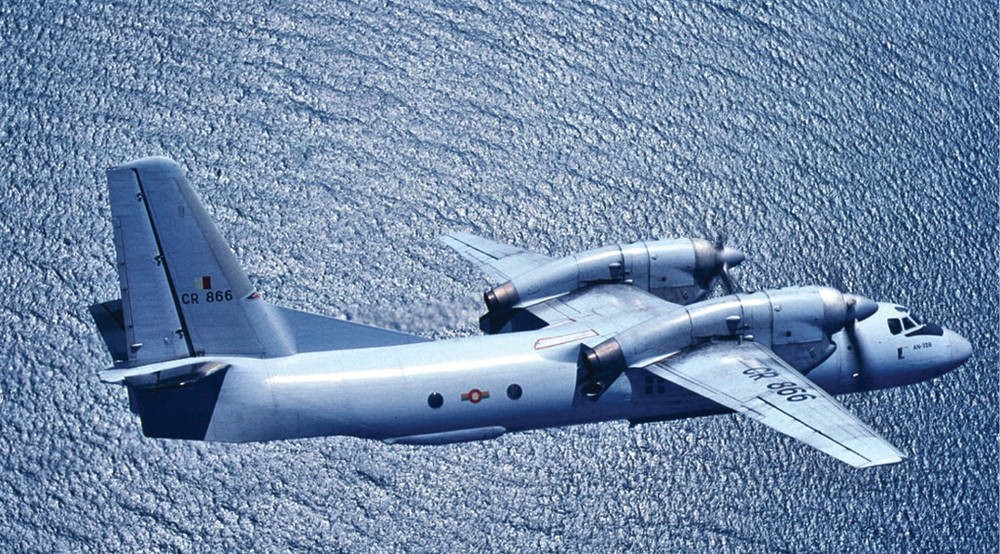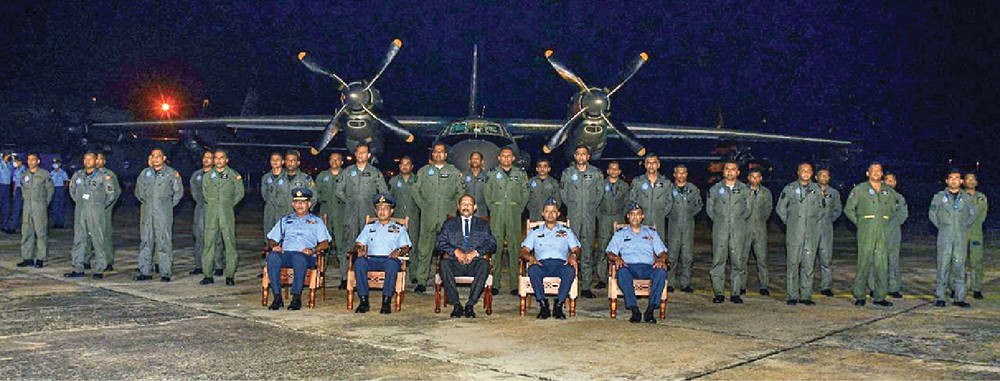The Magnificent iron giants of the blue skies
June 25, 2021The Magnificent iron giants of the blue skies
By Dishan Joseph
In our continuing series on the flying formations of the Sri Lanka Air Force (SLAF), today we journey into the realm of the heavy military transporters. The No. 2 Squadron located at the SLAF Base in Katunayake is the home of the pilots and formidable aircraft that give the Air Force its heavy lift capability. This squadron is the pioneer flying formation of the SLAF and is embellished with a military history laden with courage, sacrifice and professional excellence. I made my way to the SLAF Base in Katunayake and met up with No. 2 Squadron Commanding Officer Group Captain Pradeep Piyarathne.
Delving into the history of this squadron, Group Captain Piyarathne explained, “During the time of the Royal Ceylon Air Force the No. 2 Squadron was formed on September 2, 1957, under the command of Flight Lieutenant P.H. Mendis at SLAF Base Katunayake. The transport aircraft at that time were the Oxford Airspeed, Prestwick Pioneer and De Havilland Dove. The S-51 Dragonfly helicopter, the antecedent to SLAF helicopters was attached to this squadron. Later two De Havilland Herons entered service in 1959.”
“In the 1950s and 1960s the Herons and De Havillands were used in flood relief missions to airdrop essential items. During the 1971 insurgency, our aircraft had been used to transport food to several areas in the country. During the command of Air Vice Marshal P.H. Mendis two Convair 440 aircraft were added, enabling flights between Ceylon and the Maldives, operating as Helitours. Subsequently DC Dakota aircraft and HS 748 Avro were added to the fleet,” Group Captain Piyarathne said.
It is recorded that between 1983 and 1985 the No. 2 Squadron acquired Siai Marchetti SF260 aircraft along with one Beech King aircraft and one Avro which enabled the pilots to engage in Battlefield Air Interdictions, Close Air Support, Maritime Strikes and Reconnaissance. The No. 2 Squadron was then shifted to Ratmalana under the command of Squadron Leader J. Weerakkody. Later on, Y-12 aircraft were added to the fleet.
In 1987 the squadron received the Y-8 to their inventory. The Cessna 421 Golden Eagle aircraft was used extensively to support survey activities. In the early 1990s, the Y-8 and Y-12 aircraft were used for dive bombing missions, in addition to their primary transport role. In 1992 the No. 2 Transport Wing was separated as the 201 Heavy Transport Squadron and 202 Light Transport Squadron. In 1995, the 201 Squadron was redesignated as the No. 2 Heavy Transport Squadron. The flying horse Pegasus is the symbol of the squadron.
The trusted workhorse of the No. 2 Squadron is the Antonov AN-32B aircraft. This is a twin-engine turboprop military aircraft manufactured in Ukraine. The AN-32B is a version created from the AN-26 type aircraft. In April 1995 two Avro aircraft were lost and there was an urgent need for the SLAF to add aircraft to its inventory. In August 1995 three robust AN-32B aircraft were inducted into the SLAF fleet. This delivered confidence to the pilots and augmented the heavy lift capacity of the SLAF.

Some officers recalled that during the period when the LTTE acquired missile capability, there was a threat to SLAF aircraft landing at Palaly. During this time the pilots who flew the AN-32B had to adapt to new flying tactics, creating new routes flying over the ocean and avoiding flying over the land areas. After doing a spiral climb, the aircraft reached 21,000 feet. Take-off and landing were done towards the sea from Palaly.
However, a few AN-32B aircraft were lost. During operational flights cargo was unloaded at Palaly with the engines on. Unloading cargo and boarding passengers were done using its large rear loading ramp. This shows the commitment and risk taken by these pilots who reduced the turnaround time of these flights. The routine flight crew has two Pilots, a Flight Engineer and one Load Master. The AN-32B has a maximum take-off weight of 27,000 Kg and can cruise to its destination reaching speeds of 540 KMPH. Like its ‘big brother’ (the C-130), the AN-32B has made an immense contribution in troop transport, logistics support and casualty evacuation.
The Lockheed C-130 Hercules is a four-engine, turboprop military transport aircraft. In spite of its large payload, this aircraft has the ability to take-off and land on unpaved runways. Presently this flying giant is the tactical military transporter used by more than 60 countries across the world. In 1992 one Y-8 aircraft was lost during a bombing mission, another in 1995 and the last one at Mathugama in 2003.
In order to fill this lacuna the SLAF high command decided to purchase two C-130 aircraft from the Royal Air Force. These two aircraft were originally of the K variant (tanker) and had to be reconverted to the E variant for cargo and passenger transport. One of these aircraft arrived in March 2000 and the other in September 2000. The arrival of this aircraft enhanced the heavy lift capacity of the SLAF, giving them greater power to augment military operations. The C-130 Hercules aircraft would serve as the lords of loads.

Ground crew training for the Sri Lankans was done at the PAF Base Nur Khan, Chaklala, in Pakistan. Flying training was done by instructors of the Pakistan Air Force, at the SLAF Base Katunayake. It was a golden day in Sri Lankan military aviation when the first C-130 operational flight was flown from SLAF Base Ratmalana and touched down at SLAF Base Palaly (Northern Province) on December 1, 2000. The dependable C-130 Hercules flew hundreds of flights to China Bay, Palaly, Anuradhapura and Vavuniya transporting troops and cargo. Additionally, these pilots saved many lives as they carried injured military personnel to Colombo. The pilots of No. 2 Squadron have the distinction of flying overseas to Pakistan, Bulgaria and China to bring back much needed military supplies. Some important armaments required for Sri Lanka Navy craft were flown in by the Hercules aircraft during the intense periods of engaging the LTTE. Further, urgently required arms and ammunition for the Sri Lanka Army were transported from China by the C-130 Hercules aircraft.
The SLAF C-130 Hercules can effortlessly carry a cargo of 70,300 Kg (maximum take-off weight) and reach speeds of upto 592 KMPH. The thundering roar of its engines during take-off is testament to the power of this flying giant. On routine flights the crew consists of two Pilots, one Flight Engineer, one Load Master and a Crew Chief. In 2003, the first major overhaul of the C-130 aircraft was done in Malaysia. The other aircraft underwent its overhaul in Jordan in 2004.

In July 2011 the squadron was shifted again to SLAF Base Katunayake. During their dedicated service to the nation, the AN-32B aircraft have flown 45,147 hours and the C-130 aircraft have flown 7215 hours. However, in March 2019 the C-130 Hercules was grounded as the PDM (programmed depot maintenance) servicing of the aircraft was due. They are expected to be in active service soon.
The recent overhaul of the three AN-32B aircraft was done at State Enterprise Civil Aviation, Ukraine. This institution is the only Antonov Design Bureau in the world to engage in major overhaul. The major overhaul has extended the service life of these transport aircraft. The President’s Colour was bestowed on this squadron on March 7, 2009, for their distinguished role in air operations. The pilots and all staff of No. 2 Squadron have done a golden service to the nation, sustaining hope, maintaining air diplomacy and being an air-bridge in times of need.

Courtesy - www.dailynews.lk